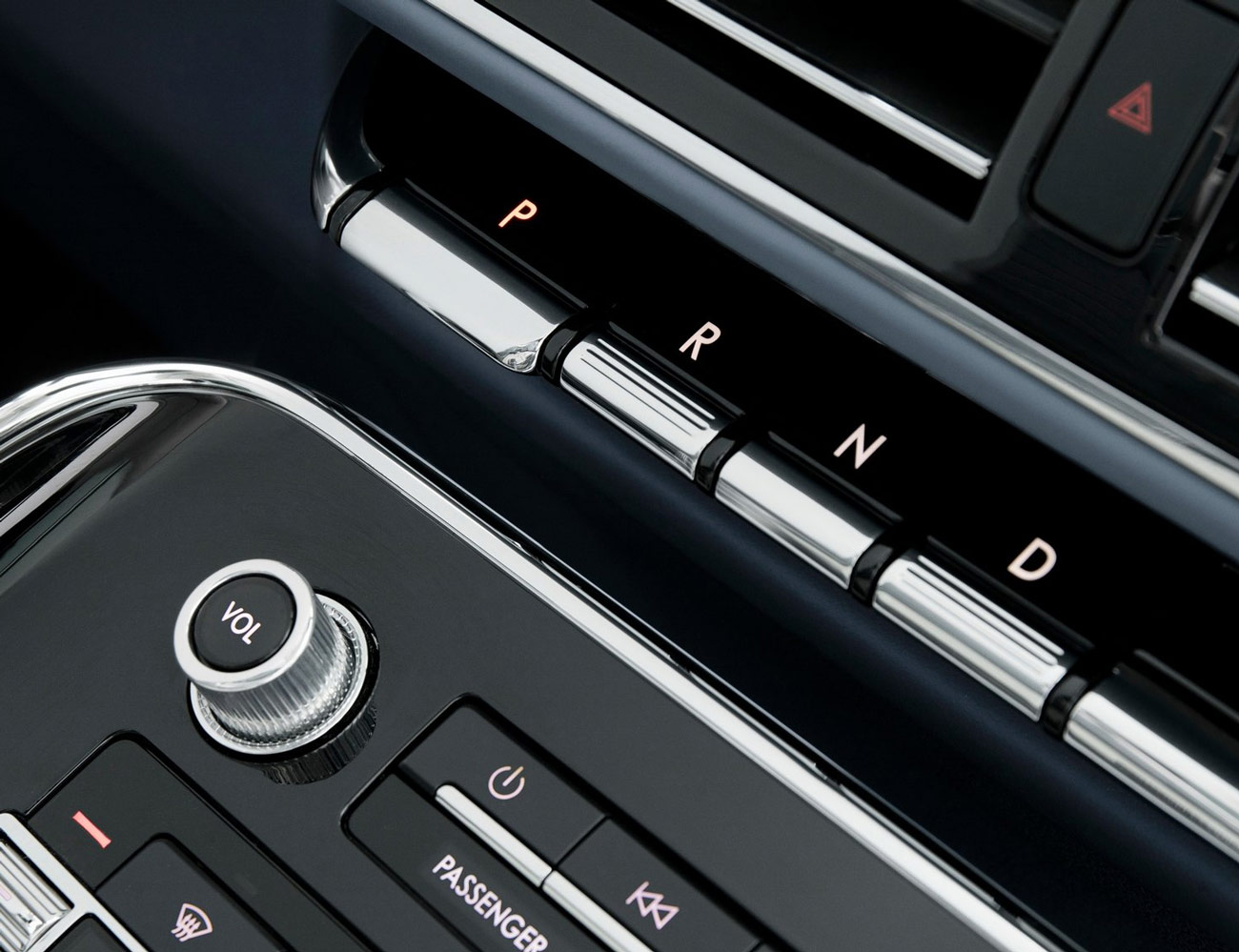Welcome to Further Details, a series dedicated to ubiquitous but overlooked elements hidden on your favorite products. This week: something about your car’s automatic transmission you may have never noticed.
If your car has an automatic transmission, the different positions you can shift into follow a specific pattern: P-R-N-D, usually followed by either a couple of lower gear options or the chance to shift it into a manual control mode. In case you’ve never driven (or, somehow, only driven cars with manual transmissions, in which place, god bless you), those four letters stand for Park, Reverse, Neutral and Drive — or, in layman’s terms, Stopped, Backwards, Free-Rolling and Forwards.
You’ve probably shifted from Park to Drive a hundred thousand times, and from Drive to Reverse nearly as many. But in all those times, have you ever stopped to wonder: Gee, why is it that every car’s shifter seems to go from Reverse to Neutral to Drive?
Well, there’s actually a very good reason: the United States government says so.
When the automatic transmission was young, carmakers would often set up their own shifters however they damn well felt like it. One common layout, found in General Motors and Chrysler models, among others, placed Reverse at the far end of the shifter, past Neutral, Drive and the lower gears. In one sense, it made sense; after all, you want Reverse to be easy to find, so why not put it at the very end of the shifter?
The problem that arose, however, was one of user error: people attempting to shift into a low forward gear would wind up overshooting into Reverse without realizing it, or vice versa. Given the mass of, say, a ’59 Eldorado, traveling suddenly in the wrong direction could result in very unpleasant consequences for any persons, animals or objects that happened to be in the way.
It took none other than noted safety advocate Ralph Nader to help bring the problems with this arrangement to light. In the second chapter of his seminal book Unsafe at Any Speed, Nader raised five ripped-from-the-headlines examples of death, injury and destruction caused by the poor design of this P-N-D-L-R shift arrangement.
“It takes no science and little foresight to accurately condemn a particularly dangerous transmission shift pattern — the P N D L R quadrant common to Cadillacs, Buicks, Oldsmobiles, Pontiacs, Studebakers and Ramblers over the past ten years,” he wrote. “The driver is forced to look at the shift lever for confirmation of the gear in use. The driver has to lift the lever to go into reverse. Should he not lift it enough, the car will remain in forward low while the driver is looking backwards and expecting the car to move in that direction.”


Some modern push-button automatics, like the Lincoln Navigator pictured here, have done away with the selection lever but if anything, it’s even harder to accidentally mis-select a mode.
Sticking neutral between forward and reverse, Nader said, was a commonly-accepted trait of mechanical design in things like mechanical tools. But the design of the Hydra-matic transmission used in these models made it cheaper to put reverse next to the forward cogs, according to an automotive transmission engineer Nader cited; while that obstacle was gone by 1956, GM reportedly stood by it — using the rather circular reasoning that, in effect, there were already too many cars on the road using the P-N-D-L-R setup to stop using it now.
As with encouraging the adoption of safety belts, Nader’s outspoken advocacy wound up getting results. While America’s domestic carmakers all came around to the superior design of putting neutral between Reverse and Drive by 1966, by 1971, it had become part of federal law in the form of U.S. Department of Transportation Standard No. 102: “Location of transmission shift positions on passenger cars. A neutral position shall be located between forward drive and reverse drive positions.”
The recent return of pushbutton transmission selectors and the arrival of electronic gearshifts means that carmakers have a tad more flexibility than they once did, in terms of control layouts. Honda and Lincoln’s pushbutton shifters arranges its choices vertically; GMC’s stretches them out horizontally; Mercedes-Benz, BMW, Hyundai and Ford, among others, make Park a separate button to seek out. But the heart of the rule remains in effect: if you want to shift from Drive to Reverse or vice versa, you have to make a stop in Neutral.
Now, some exotic cars with single-clutch and dual-clutch automated manual transmissions, like Ferrari, Lamborghini and McLaren, arrange things even more differently — but that seems to be because they do without a “Park” or, in some cases, even a “Drive.” (Ferraris, for example, only offer buttons for reverse and manual modes; neutral is obtained by pulling both paddle shifter at once, and Park occurs automatically when the car is turned off.) But again, the spirit of the law remains in play: it’s very hard to accidentally shift into Reverse when you mean to go forwards.

